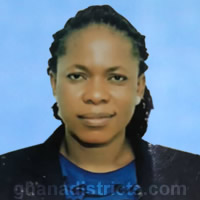The 2000 population and housing census pegs the district population at 44,440 with an average growth rate of 1.7% as against 2.7% for the national The District has a projected Population of about 51,015 as at 2005. This low population growth rate in the district should be seen as an asset to be maintained and reinforced through conscious policy, promotional and educational measures. The district has a Population Density of 12 Persons per square kilometer. This figure is much lower than the regional population density of 31.2 persons per square kilometer. Though the district population density may indicate a low pressure on land, the same cannot be said of socio-economic facilities.
Spatial distribution of the population
The population of the district is entirely rural. By the national standard for the definition of an urban settlement, none of the settlements in the Sissala West district is urban. This implies that the district is a typical rural one. Only 15 communities in the district have population above 1000 as shown in the scalogram. The district has four Area Councils. The table below shows the population of the various Area Councils.
Age and sex composition of the population
The population is dominated by the labour force (15 to 64 years) and small proportion f the elderly persons (above 64). The proportion of population below 15 is about 44.7% while that of the elderly represents about 6.3%. On the other hand, the proportion of the labour force (between 15 and 64 years) stands at 49% of the total population. This pegs the age dependency ratio of the district at 1: 96. The sex composition of the population indicates that there are 49.2 % males and 50.8% females in the district. The high proportion of women in the district implies that the needs of women should be considered in any development effort.
Date Created : 11/17/2017 3:02:23 AM





 facebook
facebook twitter
twitter Youtube
Youtube TOLL FREE 0800 430 430
TOLL FREE 0800 430 430 +233 593 831 280
+233 593 831 280 GPS: GE-231-4383
GPS: GE-231-4383 info@ghanadistricts.com
info@ghanadistricts.com Box GP1044, Accra, Ghana
Box GP1044, Accra, Ghana